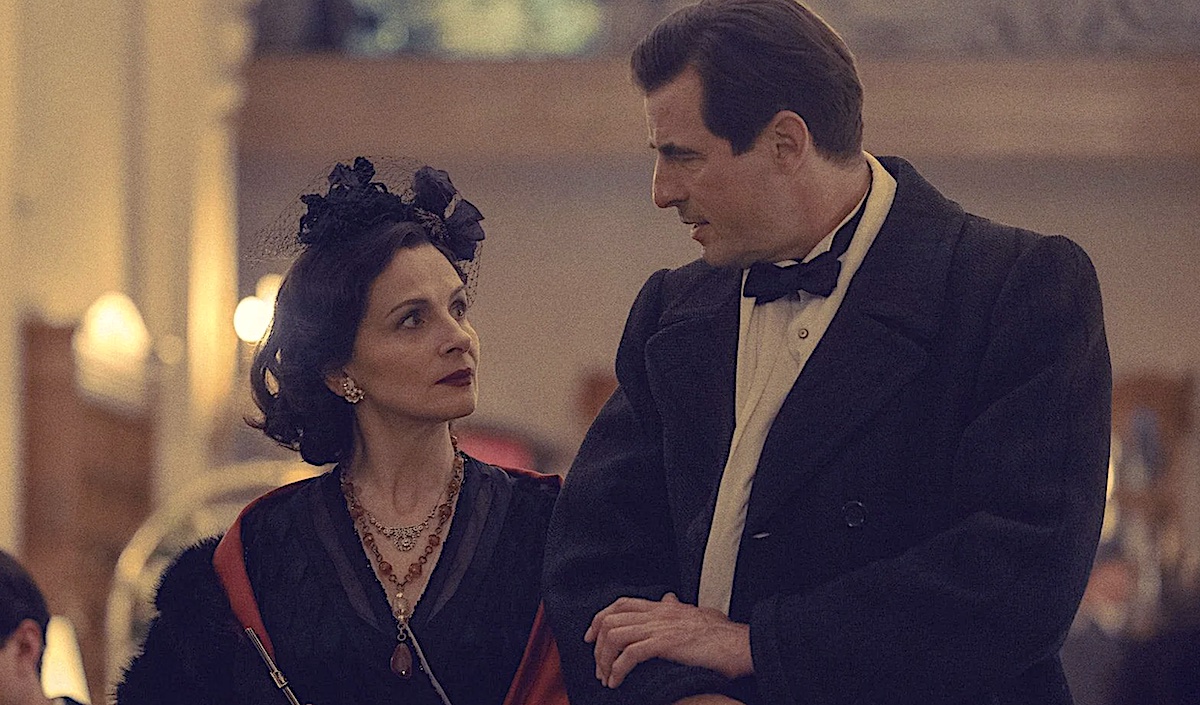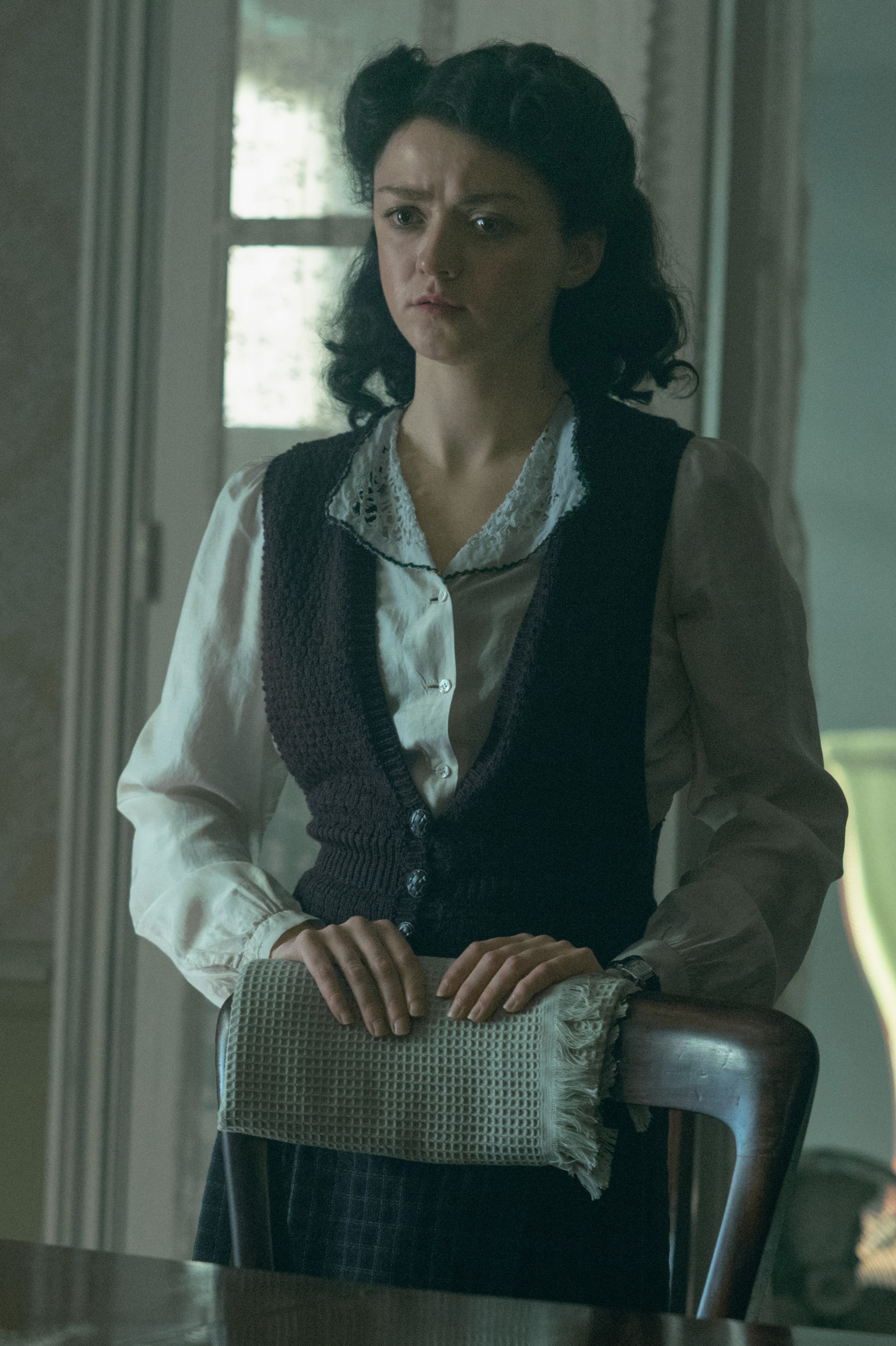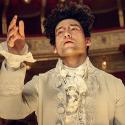The frocks, the pearls, the chicest branding of any perfume in the world… Sorry, this is not what The New Look is about, for those who swooned at the V&A’s recent Chanel exhibition.
The title promises a different focus, on the designer who in 1947 was credited with the “new look” in his first solo collection: Christian Dior. His creations were intended to make France dream again after the miseries of the four-year Nazi occupation. Corsets were resurrected, waistlines cinched-in, full skirts swirled in sumptuous fabrics. The look spoke of a romantic elegance lost during the war years, unless you were the wife of a German officer, for whom Dior resolutely refused to design.
But as in life, Gabrielle "Coco" Chanel can’t be ignored by any script about French fashion in the 1940s and beyond. You can imagine the ear-bashing she would have given Todd A Kessler, the series’ creator, clacking her pearls and puffing smoke from her ever-present cigarette at him if he didn’t give her equal billing.
Is there really much more to say about Chanel, though? In the past 15 years alone there have been half-a-dozen films about her life, an Andre Previn musical, a ballet, countless books. Here she squarely serves as the anti-Dior: a pioneering entrepreneur who revolutionised her industry in the interwar years – the BBC’s latest documentary about her equates her with Steve Jobs in this respect – and gave women relaxed smart-casual clothes to wear, without corsets. She did not avoid the Nazis, living among them at the Paris Ritz, which she had called home since 1937. This double portrait gives the drama historical width and allows other designers a look-in too. In Dior’s camp are Cristobal Balenciaga (Nuno Lopes) and Pierre Balmain (Thomas Poitevin), as well as the fashion house founder for whom they all worked, Lucien Lelong (John Malkovich). In the circle of Chanel (Juliette Binoche) are a motley collection of friends and lovers, from the German agent Hans Von Dincklage, aka “Spatz” (Claes Bang, pictured above with Binoche), and Baron Vaufreland (Christopher Buchholz) to old “muse” Elsa Lombardi (Emily Mortimer). Lombardi was a British socialite who had introduced Chanel to the Duke of Westminster and Winston Churchill, then married a Mussolini stalwart (though the series bills her as Elsa, her given name seems to have been Vera).
This double portrait gives the drama historical width and allows other designers a look-in too. In Dior’s camp are Cristobal Balenciaga (Nuno Lopes) and Pierre Balmain (Thomas Poitevin), as well as the fashion house founder for whom they all worked, Lucien Lelong (John Malkovich). In the circle of Chanel (Juliette Binoche) are a motley collection of friends and lovers, from the German agent Hans Von Dincklage, aka “Spatz” (Claes Bang, pictured above with Binoche), and Baron Vaufreland (Christopher Buchholz) to old “muse” Elsa Lombardi (Emily Mortimer). Lombardi was a British socialite who had introduced Chanel to the Duke of Westminster and Winston Churchill, then married a Mussolini stalwart (though the series bills her as Elsa, her given name seems to have been Vera).
After an initial flurry of slo-mo flouncing skirts, frocks are in short supply. (The house of Dior assisted the series, though the house of Chanel did not.) It’s 1943, and the script focuses on its two main subjects’ radically different attitudes to the Nazi occupiers. Dior (Ben Mendelsohn), a gentle, melancholy man, is appalled by them and refuses to fraternise; crucially, his beloved younger sister Catherine (an elegantly grown-up Maisie Williams, pictured below) has a lover in the resistance and takes part in their activities, which Christian has to try to keep secret.
Chanel, on the other hand, we see drawn into socialising with the senior officers and using their influence. She starts an affair with Spatz when she needs his help to liberate her nephew André from a POW camp. From there she is sucked into a plot by the new head of foreign intelligence, Schellenberg (Jannis Niewöhner), to send her old acquaintance Churchill a peace offer from senior German officials who can see they are about to lose the war in Europe. Chanel is to take the message to Churchill in Madrid, sent without the Führer’s knowledge.
Mad though this plotline may seem – Coco takes on Hitler! – it is broadly accurate. Churchill is also credited with saving Chanel after the liberation from ending up on the list of collaborators, though Kessler finds extra personnel to assist Chanel, namely the poet Pierre Reverdy (Sagamore Stévenin), her lover in the 1920s, now a resistance leader in Paris.
While the script can provide historical width, it is short on depth. The inevitable line that closes the opening credits is "inspired by true events”. This seems to mean spending very large sums on making the series look authentic, then rewiring its key characters a bit here and there, so that what is represented isn’t a lie, but not the whole truth either. And that’s probably because the whole truth isn’t available, especially the depth of Chanel’s collaborationist tendencies.
 The real Coco was right-wing, the lover of the ultra-right-wing polemicist Paul Iribe, and a scrapper. The series shows some of this: she kids with Vaufreland about which side she is on – "The winning side," he dutifully replies, while her business rivals openly call her “treacherous”. We see her feeling betrayed by Spatz, who hasn’t told her he is married, and acting treacherously in return; but that touch of naïveté doesn’t fit with her otherwise savvy behaviour. Kessler regularly plays the sympathy card, too, evoking the little girl whose father abandoned her, although go-getting is her major key.
The real Coco was right-wing, the lover of the ultra-right-wing polemicist Paul Iribe, and a scrapper. The series shows some of this: she kids with Vaufreland about which side she is on – "The winning side," he dutifully replies, while her business rivals openly call her “treacherous”. We see her feeling betrayed by Spatz, who hasn’t told her he is married, and acting treacherously in return; but that touch of naïveté doesn’t fit with her otherwise savvy behaviour. Kessler regularly plays the sympathy card, too, evoking the little girl whose father abandoned her, although go-getting is her major key.
The series looks the million dollars that it probably cost, often shooting upwards from floor level or down from the ceiling, to heighten the drama of its exquisite Parisian interiors, or showing a sinister night-time Paris, where death is potentially just round the corner. Binoche is suitably kitted out down to the last string of pearls, though Mendelsohn doesn't really look like the unprepossessing Dior. He nevertheless gives a winning, tender performance that ends up giving the piece an emotional core, with Chanel's tribulations almost a darkly comic distraction.
All the French characters talk in a lightly French-accented English, even Binoche, which seems daft though unavoidable with this kind of project, where native speakers with subtitles would not be welcomed by its main audience. Oddly, the actor whose delivery jars is Malkovich, who actually speaks fluent French but relays Lelong’s spinelessness via a strange faltering way of talking. As an account of real historical figures in extremis, The New Look comes with the usual unsettling question mark over it – how much of this is strictly true? As a lavish fictional period drama where that question doesn’t apply, though, it’s recommendable.















Add comment